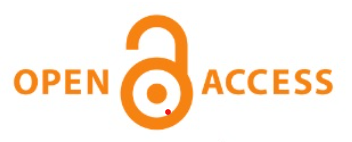
| MENU |
| About the Journal |
| Focus and Scope |
| Editorial Teams |
| Reviewer Teams |
| Publication Ethics |
| Plagiarism Policy |
| Author Guidelines |
| Privacy Statement |
| Contact |
| Manuscript Template |
| Article Processing Charge |
Honoli of Journal Primary Teacher Education is a scholarly journal that serves as a forum for academics, researchers, and education practitioners to publish the latest findings and innovations in the field of teaching, particularly in elementary education. This journal aims to promote the improvement of education quality through the dissemination of research findings, conceptual thinking, best practices, and other academic studies.
All manuscripts must be submitted to the Honoli Journal of Primary Teacher Education Editorial Team through the E-Journal portal: https://ojs3.unpatti.ac.id/index.php/honoli, where authors register as Authors online. If authors encounter any difficulties with online submission, please contact the Editorial Team via the following email: sopacuajems24@gmail.com
General Author Guidelines
Structure of the Manuscripts
The title should be as concise as possible, yet still able to clearly and directly describe the main content of the article. Try to keep it to 14 words and avoid using uncommon or confusing abbreviations. The main focus or main point of the discussion should appear at the beginning, followed by additional explanation if necessary. The title should be relevant and reflect the main problem or topic discussed in the article.
Each article must include the full name of the author without including academic titles or positions. Additionally, the author's institutional affiliation and an active email address should be included. This information aims to ensure transparency and facilitate correspondence.
In writing scientific articles, the language used determines the format of the abstract that must be included. If the article is written in Indonesian, two abstract versions are required: one in Indonesian and one in English. This ensures the article is accessible and understandable to both local and international readers. However, if the article is written in English, simply including the English abstract is sufficient. There is no need to include an Indonesian version, as the entire article is intended for an international audience. The abstract will include the background of the problem, research objectives, the approach or method used, main findings, and conclusions. Also include 3 to 5 relevant keywords to facilitate indexing. The abstract should be a maximum of 250 words long.
This opening section of the article should provide an overview of the background to the topic, including a review of relevant previous literature (the state of the art). The author should briefly explain the main problem that is the focus of the paper and the methods used to study it. Conclude this section by explicitly stating the purpose of the scientific article.
This section contains the research results and their discussion. The results obtained from the research must be supported by adequate data. The research results and findings must answer the research hypothesis previously stated in the introduction. The following components must be covered in the discussion: How do your results relate to the initial questions or objectives outlined in the Introduction (what/how)? Do you provide a scientific interpretation for each result or finding presented (why)? Are your results consistent with those reported by other researchers (what else)? Are there any discrepancies?
The conclusion must address the research objectives and findings. The conclusion should not simply reiterate the results and discussion or the abstract. You should also suggest future research and/or indicate ongoing research.
The literature listed in the Bibliography should only include sources referenced or included in the article. Please use a Reference Manager application such as Mendeley, EndNote, Zotero, etc. Reference sources should include 80% of journal articles, proceedings, or research results from the last ten years. The technique for writing a bibliography uses the APA7 style citation system.
